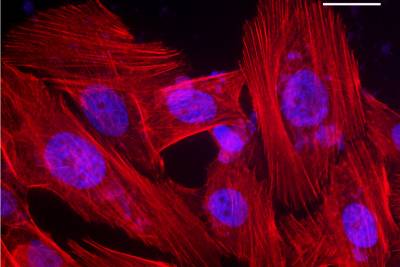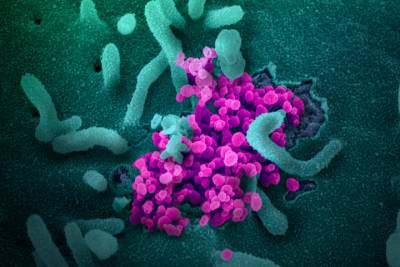Nucleic acids are all around us
Nucleic acid sequences are the recipes that build and maintain all living things over time. Sometimes scientists look for these sequences as hints at the types of living things in a particular environment and what they’re up to:
What’s cooking?
Environmental nucleic acids
Organisms are constantly shedding nucleic acids: DNA and RNA. That’s because their cells are continually eating and creating waste, performing complex metabolic functions for their survival by switching DNA genes on and off, or eventually “turning over” which is what scientists say when they mean that cells have been growing, dividing, and dying. While only RNA can be made while a cell or organism is alive, DNA is much more stable and can persist for long after an organism has moved on from an environment. In an ecosystem, the collective DNA or RNA that can be measured contains an immense amount of information on what an ecosystem is up to and how healthy it is without focusing on any one organism. For this reason, we call this type of nucleic acid, environmental DNA (eDNA) or environmental RNA (eRNA).
So how do we start studying eDNA or eRNA?
To begin to look at these environmental traces of life, scientists start by taking a representative wild sample, like seawater or soil for instance, and then carefully isolating the eDNA or eRNA from all the organisms or parts of organisms that are present in the sample (Figure 1).

Figure 1: A schematic of environmental nucleic acid (NA) collection, isolation, and analysis that essentially provides a pixelated view of the environment that was sampled
Next, by sequencing the eDNA or eRNA, we can ask and answer a few fascinating questions that can give us insight on the health of an ecosystem. This is done by matching the resulting DNA sequencing data to a database of known sequences categorized by organism.
See if you can guess the underlying principle that is addressed by the following questions that we can ask of our sequencing data:
From which organism did this piece of RNA or DNA come from?
A: This question helps us get a sense of the biodiversity of a sample by allowing us to count the number of individually distinct groups of similar organisms, called taxons, that were present in the sample. With rare exception, high biodiversity is often associated with a healthy ecosystem.
How much of this DNA or RNA is present from a particular organism?
A: Related to biodiversity, this question gives us an idea of the abundance of a particular taxon. The more times we find distinct molecules from the same taxon, we can roughly infer that more of that group of related organisms was present, relative to others.
Now what’s the difference between measuring DNA versus RNA in a sample?
With the exception of RNA viruses, DNA is present in every known (and unknown) organism. It’s also very stable compared to RNA, can persist outside of an organism for extended periods of time, and is typically found in only one or two copies per cell. This makes isolating and sequencing eDNA an ideal molecule to track both the overall biodiversity and taxon-level abundance of organisms in an ecosystem. The study of DNA from a sample containing such a mixture of different organisms is called meta-genomics. eDNA is routinely used to monitor ecosystem health by conservationists around the world. It can be used to track species over time without solely having to rely on field observations or invasive sampling.
But there’s a catch. Since DNA is pretty stable and doesn’t distinguish between an organism that is alive or dead, we can only conclude that the organism(s) that left behind some eDNA was present at some point before we collected our sample. We can’t really tell for sure how long before, or if the organism was even alive. This is where eRNA can help..
Compared to eDNA, eRNA is much more unstable. RNA typically comes from actively switching on specific genes in a DNA genome. As a result, eRNA can tell us two things: we can get a sense of the organisms that were present or very nearby our sample when it was collected. In other words more “who is here, right now” instead of “who has been here”. Second, depending on which eRNAs we can detect, we can tell which genes have been turned on. In other words, “what are the organisms in my sample making and doing?” Practically, this means that by measuring eRNA, we can get a rough census of not only which organisms were present in our sample but also what their cells were likely up to at the exact moment that the sample was collected. The study of eRNA from a sample containing a mixture of distinct organisms is called meta-transcriptomics.
What are some practical uses of eDNA and eRNA?
The unique advantages of measuring eDNA or eRNA has given rise to a whole host of practical uses. As mentioned above, eDNA can be used to track species in a non-invasive way, such as inmonitoring fishery stocks of wild Atlantic Cod, tracking Lynx and other large carnivores from eDNA left in snow tracks, to even figuring out which insect species are responsible for plant pollination by sequencing the eDNA on pollen.
And since eDNA can be very long lived, one can even ask questions of ancient ecosystems: eDNA from ice cores can give us an idea of the flora in ancient Greenland, and eDNA found in soil from New Zealand caves can contain sequences from long extinct bird species.
Of course, let’s not forget about eRNA. Perhaps the best and most current example of eRNA in the news is SARS-Cov-2 surveillance in wastewater. An uptick in SARS-CoV-2 that’s found at wastewater treatment plants often comes before a local increase in detectable cases and hospitalizations. This is an instance where eRNA can give communities a warning that a SARS-CoV-2 wave may be approaching.
We are in the midst of an explosion of possibilities for eDNA and eRNA. Can you think of other questions that eDNA or eRNA could be used to answer?









